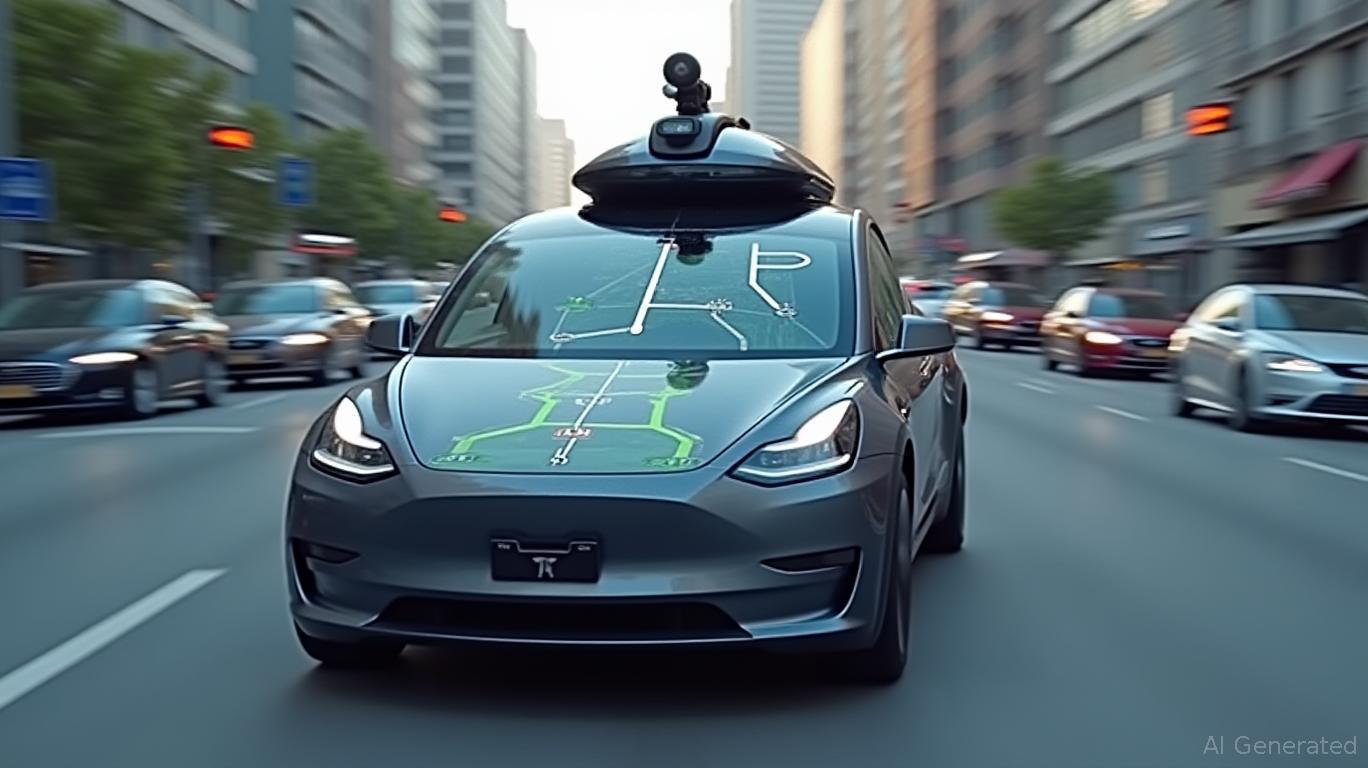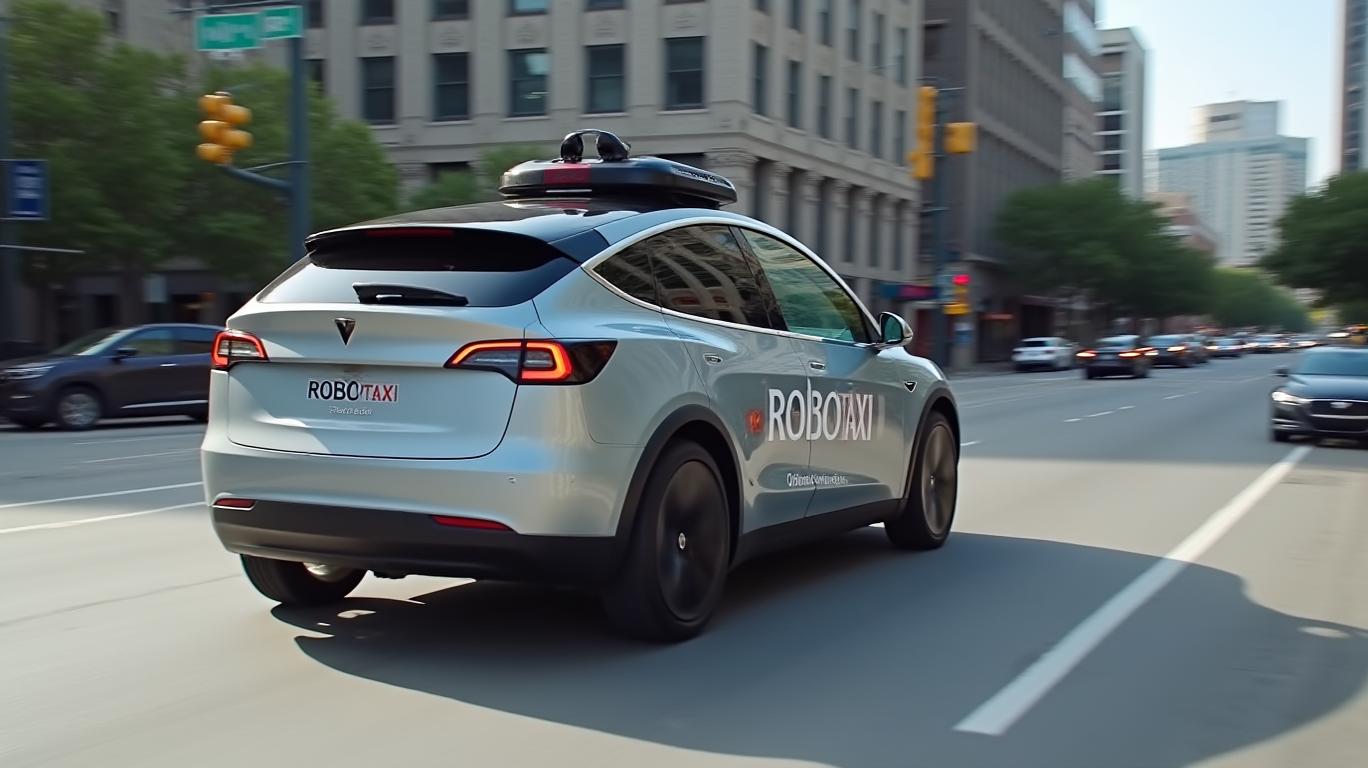Tesla's Robotaxi Crossroads: Can Regulation and Reality Align?
The promise of Tesla’s autonomous robotaxi fleet—hyped as a $50 billion annual revenue driver—faces a critical test as regulators and political realities collide. With the National Highway Traffic Safety Administration (NHTSA) probing Tesla’s Full Self-Driving (FSD) system over fatal crashes in low-visibility conditions, investors must confront a stark reality: regulatory delays and reputational risks could upend valuation models predicated on rapid autonomous vehicle (AV) adoption. While Tesla’s technical prowess is undeniable, the path to monetizing its vision is fraught with legal, political, and operational hurdles that demand a cautious investment stance.
Ask Aime: Will Tesla's autonomous robotaxi fleet disrupt the market or face regulatory hurdles?

The Regulatory Gauntlet: NHTSA’s Growing Scrutiny
Tesla’s robotaxi ambitions hinge on the reliability of FSD, its Level 2+ driver-assistance system. Yet NHTSA’s ongoing investigations—spanning 2.6 million vehicles and targeting FSD’s performance in sun glare, fog, and “Actually Smart Summon” malfunctions—threaten to derail timelines. A fatal 2023 pedestrian collision, where FSD failed to detect a pedestrian in low-light conditions, has become a focal point. If NHTSA escalates its probe to an engineering analysis or mandates recalls, Tesla could face:
- Multi-billion-dollar fines for non-compliance,
- Delayed software updates, prolonging certification bottlenecks,
- Loss of investor confidence in autonomous revenue projections.
Name |
|---|
| Alphabet AGOOGL |
| TeslaTSLA |
The stakes are existential. Autonomous revenue is a cornerstone of Tesla’s $1.2 trillion valuation, with estimates valuing its robotaxi fleet at $50 billion annually by 2028. A single regulatory setback—like a mandated FSD redesign or restricted deployment zones—could slash these figures by 20-40%, per analysts at Bernstein.
Ask Aime: "Has Tesla's FSD crash tests dented its autonomous revenue prospects?"
Political Winds: Musk’s Trump Ties and Regulatory Rollbacks
Enter Elon Musk’s political calculus. As a White House policy advisor and Trump’s top donor ($200 million in 2024 election support), Musk wields influence over agencies like NHTSA. The Trump administration has slashed oversight, halting probes into SpaceX and Tesla’s labor practices, while slashing NHTSA’s inspector general capacity. Yet this alignment carries risks:
- Conflict of interest accusations: Musk’s dual role as CEO and federal official has drawn scrutiny from consumer groups like Public Citizen, which argue his influence stifles accountability.
- Reputational blowback: If Tesla’s robotaxis are linked to future fatalities, Musk’s political clout may backfire, amplifying backlash.
While Musk’s ties may delay penalties, they cannot erase systemic flaws. NHTSA’s findings—such as FSD’s inability to reliably detect obstacles in fog—remain unresolved. A recent wrongful death lawsuit over a 2023 Tesla crash, where NHTSA identified a “product defect,” underscores the liability risks lurking beneath regulatory leniency.
Market Implications: The Autonomous Revenue Mirage
Investors betting on Tesla’s autonomous future must ask: Is the valuation overcooked? Current models assume:
- Mass robotaxi deployment by 2026,
- 10 million FSD-equipped vehicles by 2030,
- 20% margins on ride-hailing services.
But regulatory hurdles could delay these timelines by years. A delayed rollout would:
- Erode Tesla’s cost advantage: Competitors like Waymo and Cruise, backed by established automakers, could leapfrog Tesla with safer, certified systems.
- Trigger margin compression: Tesla’s capital-intensive AV strategy relies on high utilization rates; delays force higher debt burdens.
Technical prowess alone won’t suffice. While FSD’s neural networks are cutting-edge, NHTSA’s focus on visibility-related crashes highlights unresolved edge cases. Without safety certifications, Tesla’s robotaxis may be barred from urban markets—where ride-hailing demand is highest—limiting revenue potential.
Conclusion: Proceed with Caution
Tesla’s robotaxi vision is a high-risk, high-reward bet. Musk’s political sway and technical ambition are formidable, but regulatory and reputational risks loom large. Until NHTSA’s probes conclude, and FSD proves reliable in adverse conditions, investors should:
- Avoid overpaying for Tesla’s stock, currently trading at 33x forward EV/Sales, near its 5-year high.
- Monitor NHTSA’s next moves: A recall or engineering analysis could catalyze a 20-30% sell-off.
- Look to competitors with certified AV systems (e.g., Cruise, Waymo) as safer bets.
The verdict? Tesla’s autonomous future is promising, but its present-day risks demand a wait-and-see approach. Until safety and regulatory clarity emerge, the road to $50 billion in robotaxi revenue remains foggy—and perilous.


_442a2dcc1749832873286.jpeg)
_e68fac6d1749831664430.jpeg)






